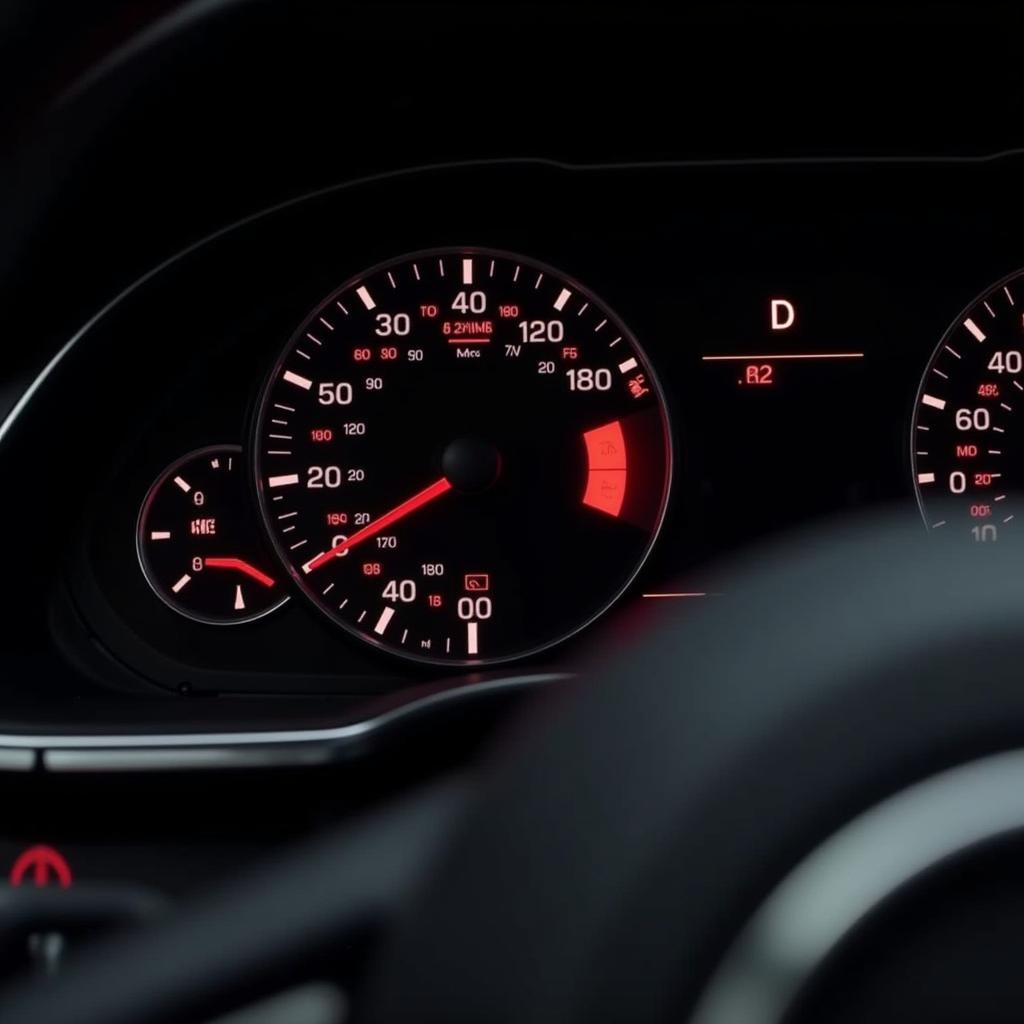The dreaded “brake malfunction” warning light illuminating on your Toyota Highlander’s dashboard can be a heart-stopping moment. This warning, often accompanied by a similar message on the multi-information display, signals a potential issue with your vehicle’s braking system. While it can be alarming, understanding the common causes of this warning and knowing how to address them can help you stay safe on the road.
Common Causes of a Toyota Highlander Brake Malfunction Warning
Several factors can trigger the brake malfunction warning in your Toyota Highlander. Here are some of the most common culprits:
- Low Brake Fluid: This is the most common reason for the warning light to appear. Brake fluid is essential for transmitting force from the brake pedal to the wheels, ensuring effective braking. If the fluid level is low, it could indicate a leak in the system, which needs immediate attention.
- Faulty Brake Light Switch: The brake light switch activates your brake lights when you press the brake pedal. A malfunctioning switch can disrupt the braking system’s communication, triggering the warning.
- Worn Brake Pads: Brake pads are designed to wear down over time. When they become too thin, sensors within the brake system can trigger the warning light, signaling the need for replacement.
- ABS Sensor Issues: The Anti-lock Braking System (ABS) prevents wheel lockup during hard braking. A faulty ABS sensor can disrupt the system, illuminating the brake malfunction warning.
- Problem with the Master Cylinder: The master cylinder plays a vital role in distributing brake fluid to the wheels. A malfunctioning master cylinder can hinder brake performance and trigger the warning light.
Diagnosing the Problem
Determining the exact cause of the brake malfunction warning requires proper diagnosis. Here’s what you can do:
- Check the Brake Fluid Level: Locate the brake fluid reservoir under the hood (refer to your owner’s manual for the exact location). If the fluid level is low, it needs to be topped up. However, simply adding fluid might not solve the problem if there’s a leak.
- Inspect for Leaks: Carefully examine the area around the brake lines, calipers, and master cylinder for any signs of fluid leakage. Look for wet spots, drips, or puddles of brake fluid.
- Check the Brake Pedal: Pay attention to how the brake pedal feels when pressed. Does it feel spongy, go all the way to the floor, or require more pressure than usual? These are all signs of potential brake system problems.
- Listen for Unusual Noises: When applying the brakes, listen for any unusual noises like grinding, squeaking, or clicking. These sounds often indicate worn brake pads or other brake component issues.
When to Seek Professional Help
If you’ve checked the basics and still can’t pinpoint the problem, it’s crucial to seek professional help immediately. Driving with a malfunctioning brake system is incredibly dangerous. Here are instances when you should contact a qualified mechanic:
- You Notice Brake Fluid Leaks: A leak in your brake system requires immediate attention.
- The Brake Pedal Feels Spongy or Goes to the Floor: This indicates a serious issue with your brake system.
- You Hear Grinding or Screeching Noises When Braking: These noises often signal worn brake pads, which need immediate replacement.
- The Warning Light Remains On After Adding Brake Fluid: If the light stays on even after topping up the brake fluid, there might be a more serious underlying issue.
Remote Diagnostics and Programming Solutions
In today’s technologically advanced world, remote diagnostics and programming solutions offer a convenient and efficient way to address car issues, including brake system problems. Certified technicians can remotely access your vehicle’s computer system to:
- Retrieve Diagnostic Trouble Codes (DTCs): These codes provide valuable information about the specific fault in the brake system.
- Analyze Real-Time Data: Remote access allows technicians to monitor your vehicle’s brake system performance in real-time, identifying potential issues.
- Perform Software Updates: Sometimes, brake system issues can arise from software glitches. Remote programming allows technicians to install the latest software updates to address these problems.
While remote diagnostics can be incredibly helpful, it’s essential to remember that not all brake issues can be resolved remotely. If the problem requires physical repair or replacement of components, you’ll still need to visit a qualified mechanic.
Preventing Future Brake Problems
Taking proactive steps to maintain your Toyota Highlander’s brake system can help prevent future issues and ensure optimal performance:
- Regular Brake Inspections: Adhere to the manufacturer’s recommended maintenance schedule for brake inspections. Regular inspections allow mechanics to identify potential problems early on.
- Timely Brake Pad Replacement: Don’t ignore the signs of worn brake pads. Replace them promptly to maintain optimal braking performance and prevent damage to other brake components.
- Quality Brake Fluid: Use high-quality brake fluid and ensure it’s replaced at the recommended intervals.
- Careful Driving Habits: Avoid aggressive driving habits like hard braking, which can accelerate brake pad wear and tear.
Conclusion
Addressing a “brake malfunction” warning in your Toyota Highlander should always be a top priority. Understanding the potential causes and knowing when to seek professional help can save you from hazardous situations on the road. Remember, maintaining your vehicle’s braking system through regular inspections and timely repairs ensures your safety and that of your passengers.
Remember: If you’re ever in doubt about your vehicle’s brake system, don’t hesitate to contact a qualified mechanic immediately.


